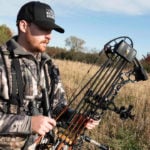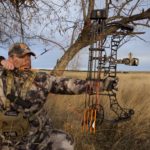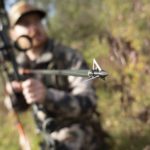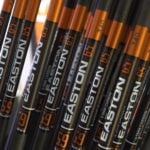Sight selection is a personal matter, which is why there are so many sights on the market.
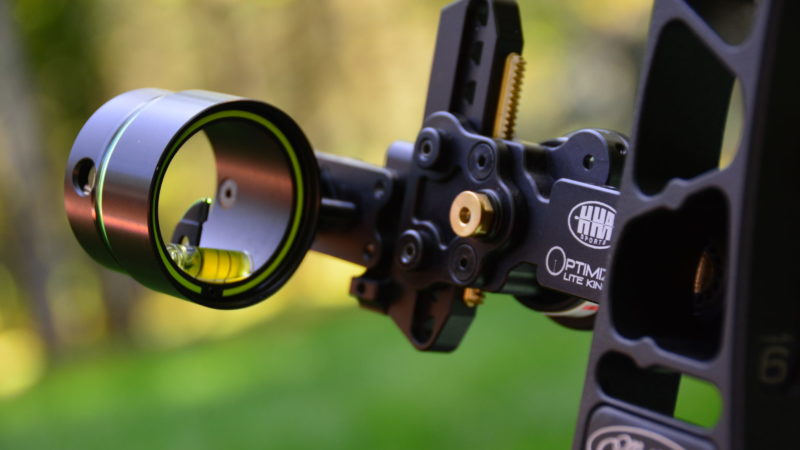
As a bow hunter you can simplify the selection process by keeping a few things in mind.
Use the least number of pins possible, demand fully-supported and protected fiber optic pins and use a round pin guard that you can center inside a large peep sight. Follow these simple rules and you’ll be just fine.
FIXED PINS vs. ADJUSTABLE PINS

The two main types of bow sights are those that feature fixed pins which are sighted in for various distances that you may expect to shoot while hunting, and those with a single movable pin that is adjusted on the fly the distance you wish to shoot.
Like most bow hunting accessories, there are pros and cons to both options.
Fixed pin bow sights provide confidence that when the time finally comes and a shot presents itself, you won’t be stuck fiddling around with setting your pin to the proper distance.
Simply draw back, select the proper pin for the distance you intend to shoot, aim and release. Just be sure to select the correct pin.
More than a few tags have gone unfilled due to the archer’s inability to use the correct pin under when he’s put under pressure.
This is why many bow hunters prefer a moveable pin sight. These sights often feature a single pin that can be slide up and down by moving a lever.
In most cases there will be a reference guide, or tape, which will have marks indicating the various yardages. Simply slide the pin into the correct position for the yardage you intend to shoot, draw back, aim and release.
While this does eliminate the chance for selecting the wrong pin, it does require additional time to adjust, which can certainly be in short supply during the moment of truth.
Additionally, if the animal moves either toward or away from you after your pin is adjusted you will either need to re-adjust your pin, or adjust your aiming point accordingly.
HOW MANY PINS SHOULD YOU SHOOT?
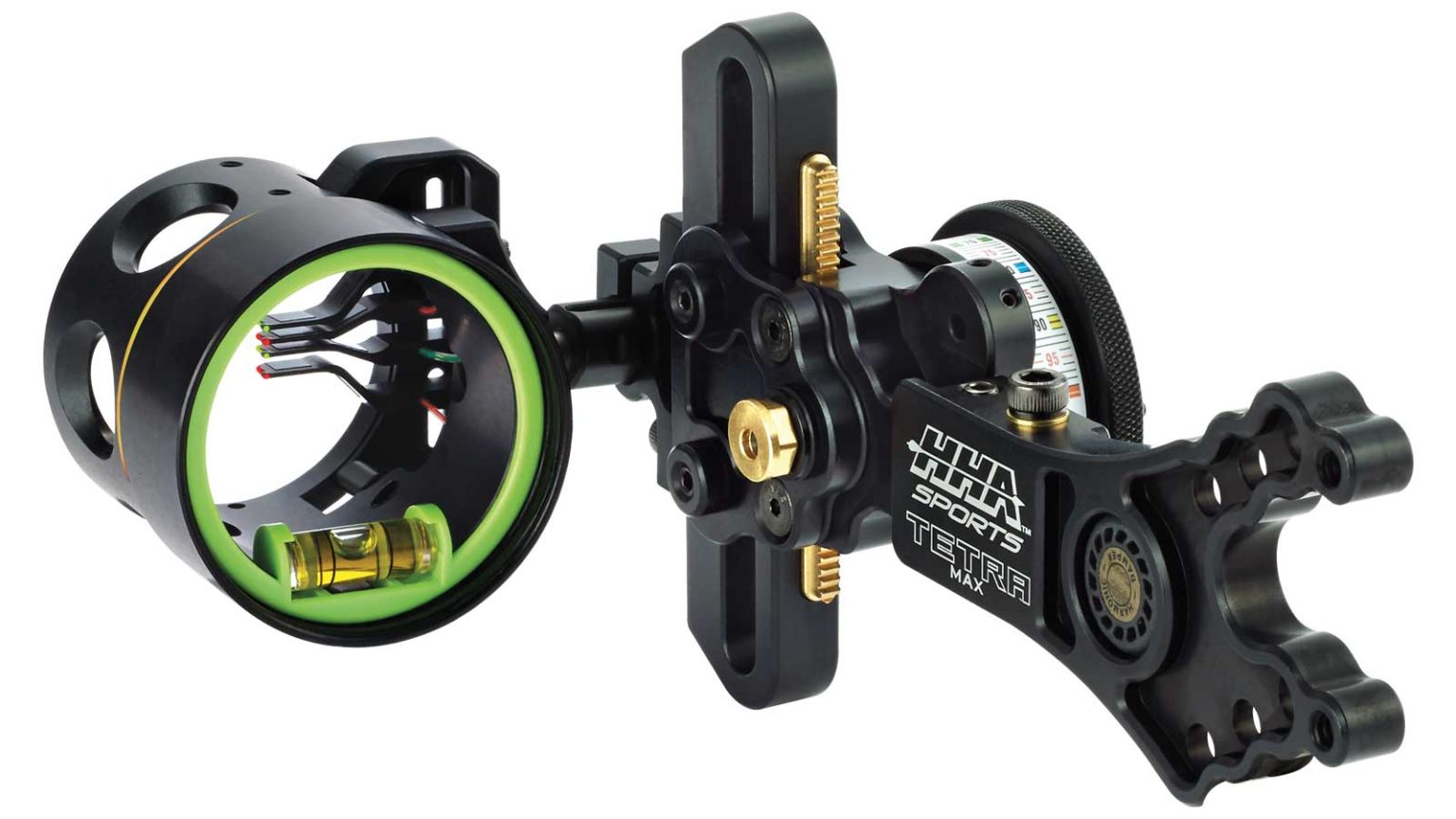
As a rule of thumb, never use more pins than you need. A small number of pins simplifies the sight picture and keeps you from making a mistake during the excitement of aiming at game.
One pin is enough for whitetail hunters who never shoot past 30 yards. Set it for 25 yards and your arrow will hit within a few inches of where you are aiming (if you hold for the center of the vitals) on all shots from 15 to 30 yards. Hold a few inches low for shots under 15 yards.
If you plan to take shots past 30 yards, a three-pin sight is a better choice for most bowhunters. You can set your pins for 20, 30 and 40 yards. This gives you a great deal of flexibility without adding too much confusion to the sight picture.
It is only if you plan to shoot past 40 yards (the opportunity will be very rare even if your form is up to the challenge) that you need more than three pins.
However, setting five pins for 20, 30, 40, 50 and 60 yards can come in handy on opportunities for long follow-up shots on deer that have already been hit. Having the extra pins really makes a big difference in those situations.
SIGHT PIN DIAMETER
Bow sights come with a variety of pin sizes including .029”. .019” and .010”. The larger the pin the more visible it will be in low light conditions, but the less accurate it will be at longer ranges as it covers up more of the target and thus doesn’t allow for precise aiming.
With the continued growth in popularity of spooled fiber optic pins, even a small .019-inch diameter fiber optic aiming point can be highly visible in low light conditions and can be more accurate than the popular .029-inch pins of just a few years ago.
Another strategy is to mix pin sizes to match the shot distance setting. Several sight companies make pins in a range of diameters.
You can use large diameter fibers (up to .050 inches) for your short-range pins and smaller diameter fibers (down to .010 inches) for your longer-range pins. The small diameter pins obscure less of the target making them more precise on long shots.
Most archers feel comfortable shooting with .019″ pins, which seems to be the “norm” for today’s bow sights. If you have trouble seeing in low light conditions you may opt for the larger .029″ pins, while if you plan on shooting long distances (50 yards or more) a .010″ pin will help you be more accurate.
ROUND PIN GUARDS
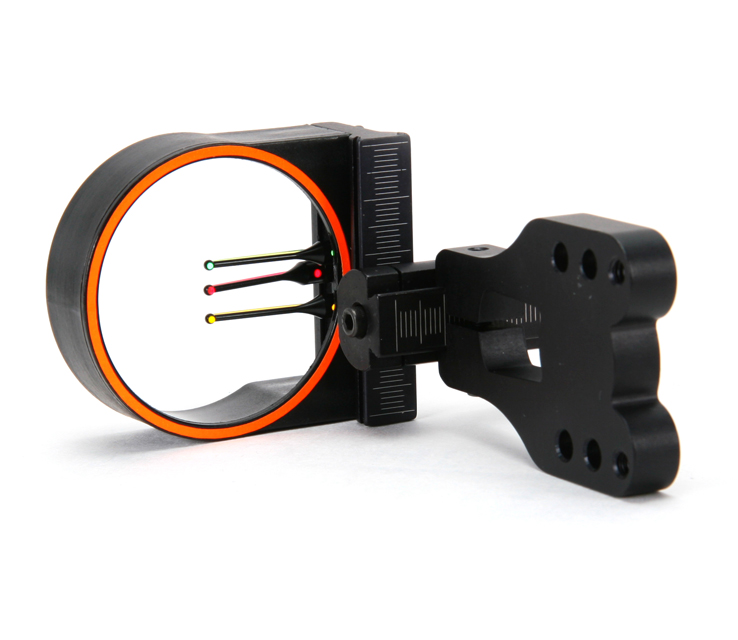
Round pin guards offer you a couple of significant advantages over square pin guards, which are becoming less and less common as the years go by.
You might not realize that your pin guard can help you aim better, but you can center the pin guard in your peep sight rather than centering individual pins. This permits you to use the same exact anchor point on all shots near and far.
All you have to do is lower or raise the bow until the proper pin is on the spot; your anchor point remains the same (sight-in using your most comfortable position). If you were centering individual pins, you couldn’t do this.
You have to use a much larger peep sight in order to center the pin guard and this presents another advantage. A larger peep lets more light through for better aiming at dawn and dusk and gives you a better field of view when tracking an approaching animal and when aiming.
Many companies now offer a variety of bright colors on the back of the pin guards in order to assist with aiming, especially in low light conditions.
Whether they are green, orange, yellow or white a bright, circular pin guard will help make you a more accurate shooter.
BUBBLE LEVEL
A bubble level is a definite asset on a bow sight because it encourages consistency. By centering the level on every shot, you be sure you are holding the bow the same each time, eliminating some side to side misses.
If you plan on using a bubble level on your bow sight, have a technician verify that your sight is completely level with the rest of your bow. Often times an “out of the box” sight will need some minor adjustments to get it just right.
For this reason many bow sights now come with 2nd and 3rd axis adjustments to help fine tune your level.
BEWARE OF BRITTLE FIBER
A pet peeve of many bow hunters are fiber optic filaments that are brittle and break easily. Some sight companies don’t support their fiber very well where it comes out of the sight body and loops up to the pin head.
If you press on it here, it immediately snaps and that’s bad news for bowhunters. Selecting a sight that uses high quality fiber optics that are fully protected will allow your sight to last longer, withstand more abuse and prove to be reliable when you need it the most.
SIGHT LIGHTS
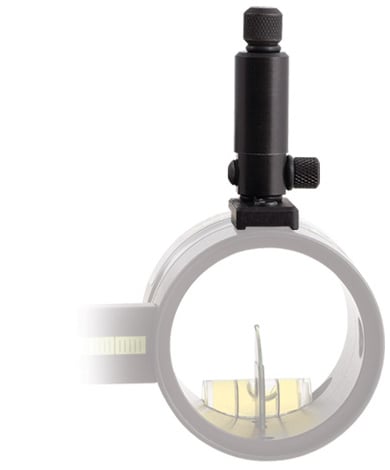
Many bow sights come pre-tapped to accept a small screw-in light that can help illuminate your sight pins in low light conditions. If needed this small accessory can really come in hand.
However, be sure to check the rules and regulations for the areas you will be hunting as many States do not allow the use of any electronic device mounted to your bow, which includes sight lights.
MICRO ADJUSTMENT
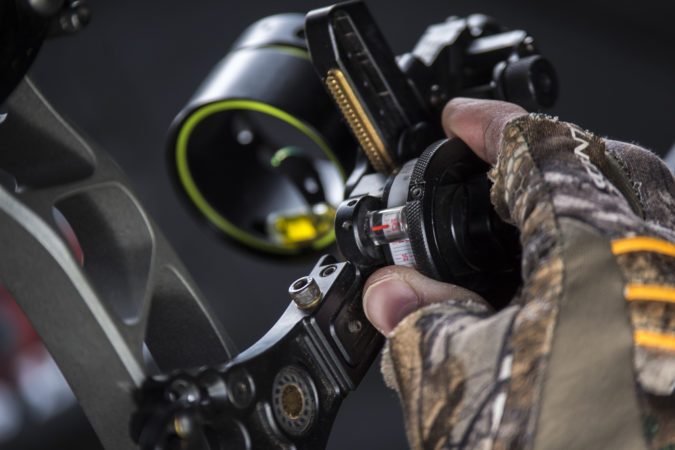
Being able to fine tune your bow sight is critical for pinpoint accuracy, which is why micro-adjustment has become a popular feature on today’s sights.
Most micro-adjustment systems work by loosening a locking screw which allows you to turn a knob and adjust your sight either horizontally or vertically. Being able to adjust your pins both individually as well as together as a group, comes in handy when trying to get the most out of your bow setup.
Although micro adjustment is a nice feature, it is one that often adds considerable expense to the sight itself.
Keep in mind that once your bow is sighted in and the pins are locked down, this feature is no longer needed. So it’s up to you to decide if paying for the micro adjust feature is worth it or not.

 By
By 